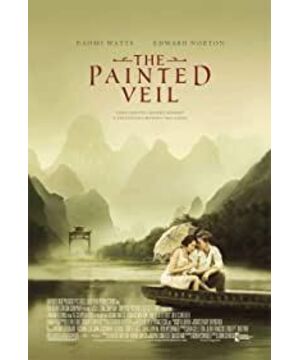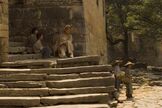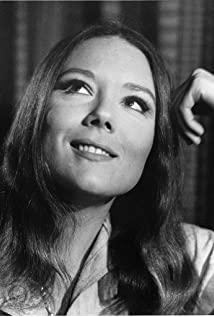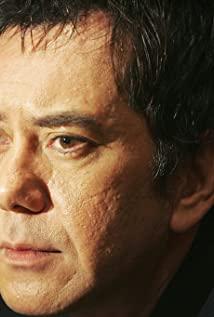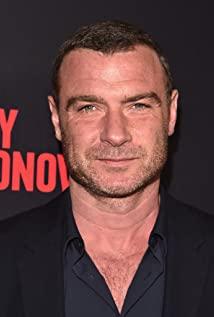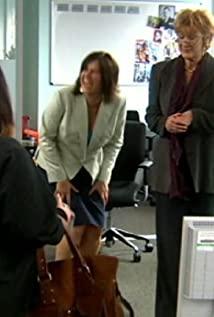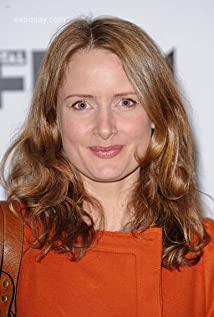Behind the scenes production [behind the scenes] Director John Callan is a Hollywood director. His short film "Rust" has been screened in many film festivals around the world, won the Discovery Award at the Clermont-Ferrand Short Film Festival (1997) in France, and won the Best Short Film Award at the International Short Film Festival (1997). His 1998 film "Praise" won the grand prize in international film festivals such as the Toronto International Film Festival (2000). Veteran cinematographer Stuart Dryburgh ("BJ's Diary," "Sex and the City") was nominated for an Oscar for "Piano Lesson" in 1994, while his DP "My Father's Cabin" won this year won the Best Cinematography Award at the Shanghai Film Festival. Artist Tu Juhua's works include "Accompanying Forever", "Jing Ke Assassinating the King of Qin" and so on. In addition, the gorgeous costumes in "The Veil" were designed by multi-award-winning, internationally renowned costume designer Ruth Myers ("Proof of Life", "L.A. Confidential", "Emma")... [About the film ] The film is based on Somerset Maugham's novel "The Gorgeous Veil", which Hollywood had put on the screen in the last century, when the heroine was Greta Garbo. Producer Ms. Bo avoided the comparison with the 1934 version, "Anyone has the right to adapt and shoot a classic original work at different times." The Sino-US cooperation on "The Veil" cost 20 million US dollars. Since it took ten years to start filming, and the director and heroine were also changed again and again, the real funds for filming were quite limited. However, for the details in the film, the "Veil" crew still strives to "restore the truth", and also invited Ruth Myers, who was nominated for the best costume at the Oscar twice. Ruth Myers chose to transform with clothes that truly belonged to the 1920s. In her clothing room, there are all kinds of old British women's clothing: "I found a lot of clothes from 80 years ago from the UK, and then remade them according to the figure of the heroine. The clothes of that era are difficult to imitate, Color, in particular, has now been discontinued because the dyes used to dye cloth are toxic." ... [About the original author] William Somerster Maugham was a famous British novelist and dramatist. Born into a family of lawyers, he worked in the London intelligence service and traveled the world after the war. He wrote 4 novels, more than 150 short stories, and more than 30 plays in his lifetime. However, Maugham himself is very modest in his evaluation: "I'm just one of the second-rate writers in the front." Somerset Maugham was born in Paris on January 25, 1874. His father was a lawyer and worked at the British embassy in France at the time. When little Maugham was less than 10 years old, his parents died one after another, and he was sent back to England to be raised by his uncle. After school, Maugham was often bullied and tortured by older children due to his short stature and severe stuttering. Since then, Somerset Maugham has developed a withdrawn, sensitive and introverted character, and his childhood experiences have also had a profound impact on his worldview and literary creation. Later, Maugham graduated from medical school and became a trainee at St Thomas' Hospital in London. In 1897, he wrote the novel "Lisa of Lambeth" based on his experience as a midwife in the slums of Lambeth, London. The book sold so well that Maugham decided to quit medicine and pursue literature. Starting in 1903, Somerset Maugham began writing plays. In 1907, a comedy about marriage and money, "Mrs. Frederick," earned Maugham a reputation. The following year, four of Maugham's plays were staged in London with unprecedented splendor. After the outbreak of World War I, the 40-year-old Maugham joined the French Red Cross First Aid Corps, and was invited by the British Intelligence Service to travel between London headquarters and the European continent as a special agent to thread the needle for other intelligence personnel of the Intelligence Service in the European Continent. . These experiences of Somerset Maugham provided rich material for some of his later spy novels. In 1915, Somerset Maugham had a daughter with a married woman, Sirius Wilcam, and the two married the following year. But after the marriage, Maugham still lived with Haxton, a same-sex partner he met while serving on the Western Front. In the next few years, the two traveled together in China, India, Latin America and other places, collecting a lot of anecdotes. anecdote. In 1927, Sirius finally could not bear the neglect and divorced Maugham. Published in 1915, The Shackles of Human Nature was Maugham's most famous and best-selling novel, having sold more than 10 million copies before Maugham's death. The subsequent publication, The Moon and Sixpence, was also a huge success. The protagonists in Somerset Maugham's novels almost always correspond to a real person with important influence. For example, the novel "Pleasure" is based on the British writer Thomas Hardy, and the later work "Blade" alludes to the philosopher Wittgenstein. . In 1926, Maugham settled on the French Riviera, a Mediterranean resort. During World War II, Maugham went to the United States. In 1946, Maugham returned to the French Riviera and established the Somerster Maugham Prize to reward outstanding young writers, encouraging and funding their travels. In 1952, the University of Oxford awarded Maugham an honorary doctorate, and Maugham was subsequently awarded the prestigious title of "Knight of the Legion of Honor". On January 25 of the same year, the famous British Garrick Literature Club held a special banquet to celebrate his 80th birthday. In the history of British literature, only three writers, Dickens, Thackeray and Trollope, received such courtesy. Maugham died on the French Riviera on December 15, 1965, at the age of 91. [Ten years to sharpen a sword] It took a long process to bring Maugham's novel "The Veil" to the big screen. In 1995, screenwriter Ron Neswanier, who had just made a name for himself with The Philadelphia Story, started looking for his next project. "My interest in Somerset Maugham's work started when I was a child and watched the movie 'Famous People,' based on his novel of the same name," said Nesvanir, "so I watched many of his works one after another, and finally I saw "The Veil," and for me, the novel was completely beyond Maugham's other writings." Talking about the novel, and Clayton revealing that she was working hard to get the rights to adapt it, she recalled: "We talked about how Maugham's novel was honest about sex and love, and we all knew it should be made into a movie. ." The two began adapting the script together, and the backstory of Kitty's decision to marry Watt eventually turned into a flashback. After 3 years of hard work, the script for "The Veil" was finally completed, and the first person to see the script was Edward Norton. In 1999, Norton, who saw the script, was instantly conquered, and as a pro-China faction, he was very willing to accept the role of Walter. For a number of reasons, including Norton was working on his directorial debut, "Men's Beauty," the film couldn't be filmed at the time. Norton joined the film's producers in late 1999, and over the next six months, he and Neswanier added more Chinese elements to the script. Because Norton studied Chinese history at Yale University, under his inspiration and guidance, Walter's experience in China has become more and more full. Naomi Watts was the first actor to read the script first, when she was filming 2001's The Bell in America. “Even though Edward had been on The Veil, there was no director. I was hooked on the script the first time I saw it, but it wasn’t ready to shoot,” recalls Watts. Norton said: "Naomi and I were both busy at the time, and the director candidates were changing, and Veil was nowhere to be seen again in 2001. We had a very bad start, and we were never able to make it in the same year. It's all set." In the fall of 2004, the production plans for the film finally came to fruition, and the project that Norton and Watts had been dreading for years was finally ready to set sail, with John Callan at the helm of the film. "Naomi had just finished filming 'Love Never Comes Back,'" Norton said. "I had seen the movie, which had rave reviews, and I asked Naomi about her shooting experience, and she said she was satisfied, John Callan. It always brings out the best of the actors." It can be said that "Love Never Comes Back" is no less difficult than "The Veil", and what Karan is good at is to look at flawed characters with an unbiased eye . After New Year's Day in 2005, Norton, Watts and Karan met for lunch. The preparatory work for the film has finally begun, and before the official preparations, the producer actively got in touch with the China State Administration of Radio, Film and Television. Norton said: "As far as I know, other Western films shot in China have not been consulted with the State Administration of Radio, Film and Television, and "The Veil" should be the first Western film about China shot in China in a long time." , it took a long time to obtain various licenses and give the green light to each link, but after all, the producers finally got their wish. This is followed by the selection of filming locations in China. In 10 days, the crew traveled more than 8,000 kilometers, striving to find ancient villages and towns surrounded by mountains and rivers, and also close to modern facilities for the convenience of cast members and production companies. In the end, Guangxi became the best location. At first, the producers planned to build the Meitan Mansion in the film in the valleys of Guangxi, but the huge workload daunted everyone. After several searches, the ancient town of Huangyao was finally discovered. Located in Zhaoping County, Guangxi, Huangyao has a history of thousands of years and is known as the "Dreamland Home". It is one of the four ancient towns in China. In addition to filming in Huangyao Ancient Town, the crew also filmed in Beijing's studio, and Beijing's studio was the first to start. The entire crew consists of 40 Westerners and 260 Chinese, 12 translators alone, and as many as 70 working vehicles. In addition, the producer also changed the script as appropriate, changing Hong Kong in the original book to Shanghai, and the London scene in the film was also shot in Shanghai. 【Edward Norton's Testimonial】 Because Edward Norton was interested in Asian culture, he couldn't put it down when he first saw the script of "The Veil" 6 years ago. Before coming to China, Norton had consulted many pictures and materials about China in the 1920s to understand the history at that time. "The male protagonist I play is a typical Westerner who came to the East full of arrogance and ambition, thinking that his scientific knowledge could change China and 'cure' what he thought was a stubborn disease. But after setting foot on this land , he realized that he was wrong, that he was defeated by the facts and the local culture, and realized how shallow his previous knowledge was." For Norton, the biggest takeaway from filming "The Veil" is this: "I studied at Yale University. A teacher at the time, once wrote a book called "To Change China". Today, most Americans still hold such 'self-righteousness'. They think that what they call 'science' and professional knowledge can solve everything, Can change a country. They're wrong!" Trivia Naomi Watts appeared in "The Veil" with brown-black hair. According to reports, Watts's style was completely based on the description of the heroine in Maugham's original novel. designed. "The Veil" will be Watts and director John Cullen's second collaboration since "Love Never Comes Back" (2004). · In 2005, Edward Norton came to China to film "The Veil" and stayed for more than 3 months in total, and he has never forgotten the acting skills of his co-actor, Hong Kong actor Huang Qiusheng: "His performance is very deep, I admire him very much, like that I can't do the acting." Huang Qiusheng said with a smile that Norton was really nervous after acting opposite Edward Norton. Huang Qiusheng even said: "I'm a madman, but he's better than me. When I was acting with him, I found that he was already terrifying!" ·Huang Qiusheng thinks that the biggest challenge to him in filming this play is his lines. On the set, he often forgets to perform when he speaks English lines, and then forgets to speak during the performance, which makes him a little "busy". Naomi Watts had a blonde girl stand in for her for nearly half an hour while filming a crying scene. She herself was listening to melancholy music, hoping to get into the state quickly. During the official shooting, Watts' crying scene was filmed 15 times. The old actor Li Bin led Toby Jones up the hillside 15 times to the front of the heroine's house. Immediately afterwards, Watts' heart-wrenching cry broke out in the house.
View more about The Painted Veil reviews


